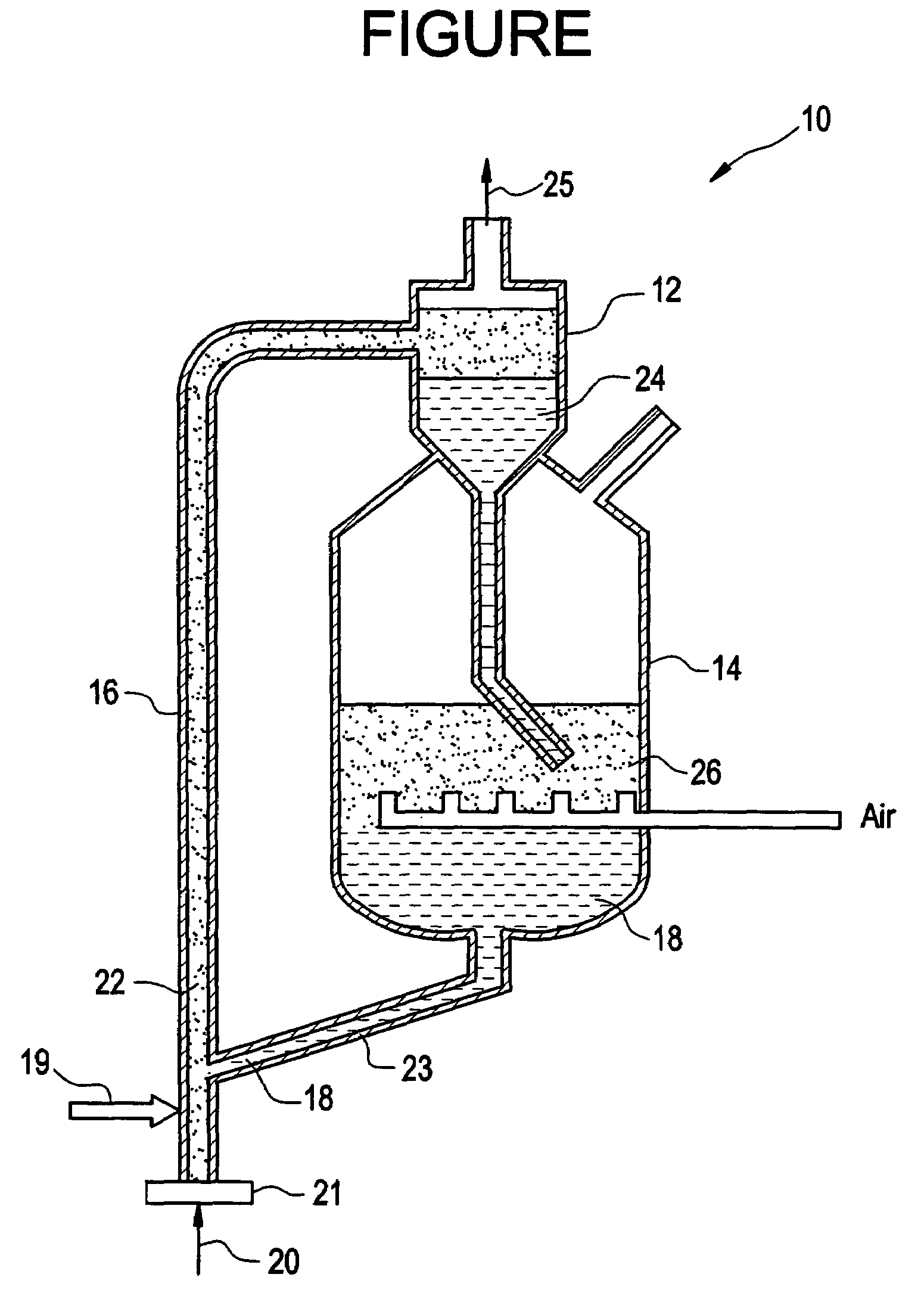Spray atomization
a technology of atomization and hydrocarbons, applied in the direction of thermal non-catalytic cracking, other chemical processes, fuels, etc., can solve the problems of difficult contact with many tons of hot, difficult to re-create cracking catalysts with large volumes of heavy oil feed, and difficulty in vaporizing heavier feeds, etc., to achieve the effect of increasing the efficiency of atomization in hydrocarbon processing
- Summary
- Abstract
- Description
- Claims
- Application Information
AI Technical Summary
Benefits of technology
Problems solved by technology
Method used
Image
Examples
example 1
Determining the Efficacy of Surfactants to Stabilize Water-In-Oil Emulsions
[0037]An experimental vessel was constructed in order test the ability of various surfactants to stabilize water-in-oil emulsions. The experimental vessel was of a pipe construction that allowed the experiment to be conducted under appropriate temperature and pressure conditions that reproduced those typically encountered in hydrocarbon processing. The experimental vessel was equipped with a base that included a blender blade for generating emulsions, and with feed-throughs on the top that allowed for removal of aliquots of process fluid for microscopic examination. The fluid shears experienced in the atomization nozzle were simulated by the turbulence created by the blender blades. A speed-controlled motor system was used to control this turbulence. The top of the sample vessel included a provision for a pressure transducer, an internal temperature transducer, and a dip tube system which allowed for removal ...
PUM
| Property | Measurement | Unit |
|---|---|---|
| temperatures | aaaaa | aaaaa |
| diameter | aaaaa | aaaaa |
| operating temperatures | aaaaa | aaaaa |
Abstract
Description
Claims
Application Information
 Login to View More
Login to View More - R&D
- Intellectual Property
- Life Sciences
- Materials
- Tech Scout
- Unparalleled Data Quality
- Higher Quality Content
- 60% Fewer Hallucinations
Browse by: Latest US Patents, China's latest patents, Technical Efficacy Thesaurus, Application Domain, Technology Topic, Popular Technical Reports.
© 2025 PatSnap. All rights reserved.Legal|Privacy policy|Modern Slavery Act Transparency Statement|Sitemap|About US| Contact US: help@patsnap.com


